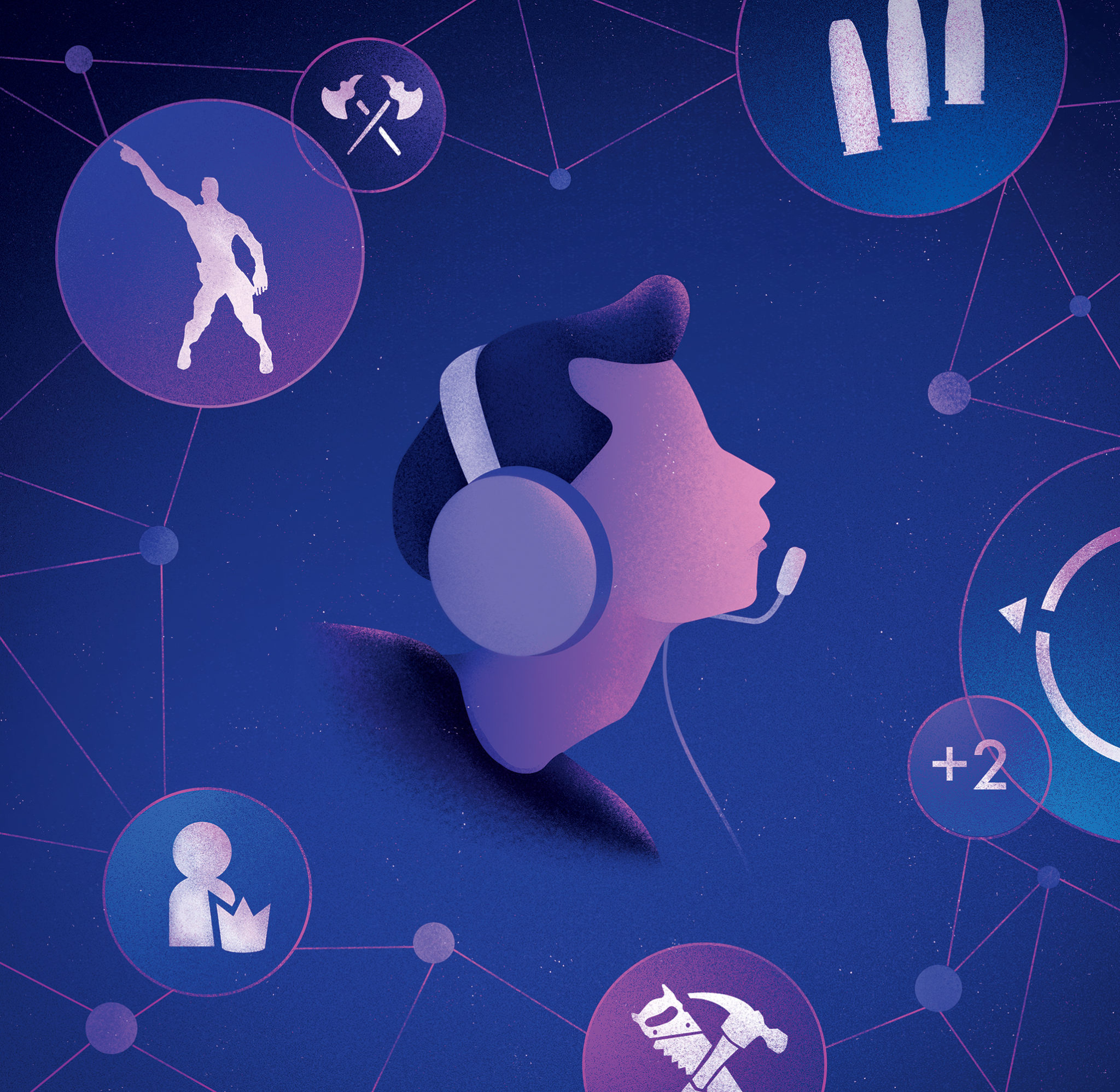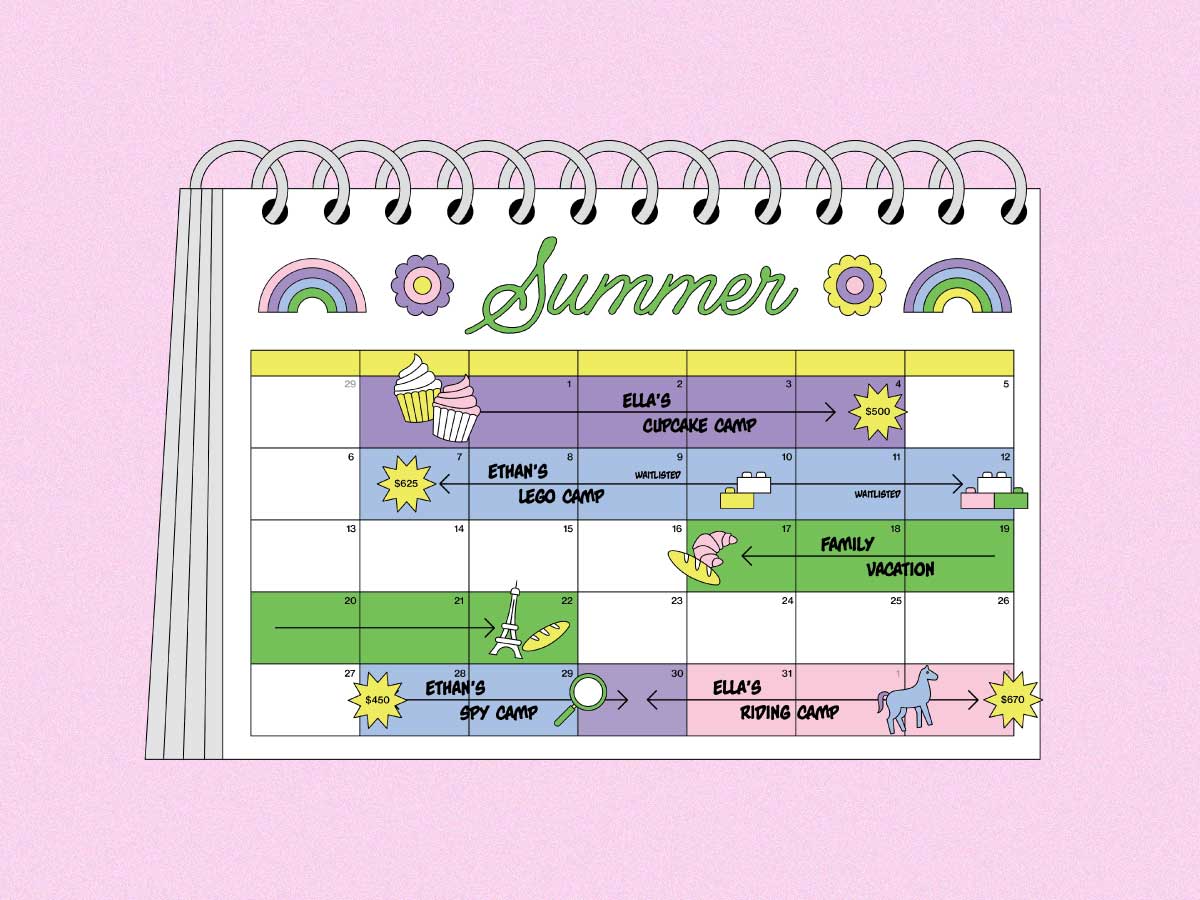Do your children break out odd dance moves? Do they refer to their knapsacks as “back bling”? Do they talk about meeting friends in Snobby Shores? These are all signs that they’re fans of Fortnite: Battle Royale. The multi-player combat video game has become a bona fide sensation since launching last fall. More than 40 million players compete every month, and the game is free to download and play on all major gaming platforms and mobile devices. Its publisher, Epic Games, makes money by selling related items, including new characters, accessories, and dance moves. Interestingly, all these optional elements are purely aesthetic—none offers any competitive advantage.
The format is simple. Up to 100 players are airdropped from a flying blue bus onto an island where they hunt one another down until only one remains. Players can refashion wood, metal, and rock elements into fortifications and ramps. No game lasts more than 25 minutes, and periodically, a destructive storm sweeps across the landscape, pushing players together and forcing action. Think of it as a cross between The Hunger Games and Minecraft. If your kids play Fortnite, it’s possible you haven’t seen them since school let out.
“It is an obsession,” says Cindy Phillips of Silver Spring. During the school year, her 12-year-old son, Kellen Campbell, is allowed to play an hour a day, but he gets two to three hours during summer vacation. His parents use Disney’s Circle device to restrict when and how much he games as well as how much he can spend on in-game purchases. “He wants to spend everything he earns,” says Phillips.
Players see their characters in action rather than from behind a weapon. “That makes a difference,” says Robin Brannan, a marriage and family therapist in Kensington. “You’re watching rather than acting out..” In fact, “there’s no blood,” Kellen says. “The character just disappears.”
Fortnite has a strong social component. As I spoke with Kellen, he played with two friends while chatting with them over FaceTime. They worked out their strategy while the game unfolded, and their dialogue didn’t sound like the usual smack talk you hear in multi-player video games.
“The Fortnite community is so welcoming and positive and so much fun to be around,” says Ben Kuchera, a senior editor at the gaming publication Polygon. With lots of games, he says, “there are people saying nasty racist and sexist things, just trying to make sure you don’t have a good time. In Fortnite, it’s the complete opposite.”
If you’re concerned about the amount of time kids can spend with Fortnite, Brannan recommends abiding by screen time parameters suggested by the American Academy of Pediatrics. Additionally, she encourages moms and dads to consider the opportunity cost of playing video games: “Because then they’re not doing things necessary for social-emotional development, like in-person social interactions, being outdoors, free play, and developing a social-emotional relationship with parents. I find it hard to believe you can do all those things and play video games more than an hour a day.”
How do mothers and fathers know if their child is just enjoying a passionate pastime or has developed an unhealthy obsession? “If your kid is getting frantic while playing the game, not having fun doing other things, or constantly asking when they can get back on it,” Brannan says. “Sometimes the dopamine hit they seem to get from the video game does seem to cross over into an addictive quality.”
But you don’t need to worry if some of Fortnite culture crosses into their lives away from screens. Dancing, for example, can be pretty good exercise.
This article appears in the August 2018 issue of Washingtonian.



















